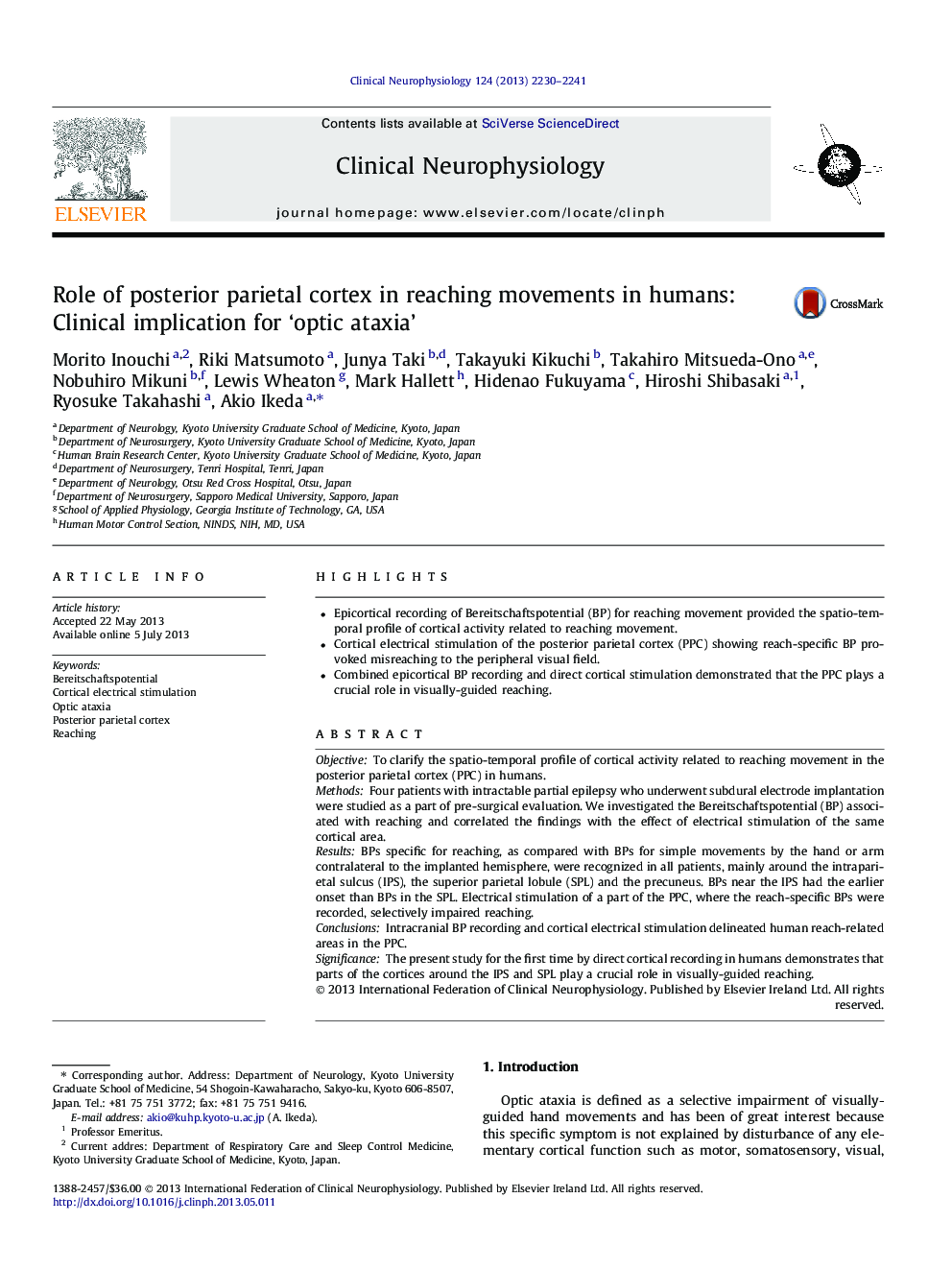| Article ID | Journal | Published Year | Pages | File Type |
|---|---|---|---|---|
| 3043325 | Clinical Neurophysiology | 2013 | 12 Pages |
•Epicortical recording of Bereitschaftspotential (BP) for reaching movement provided the spatio-temporal profile of cortical activity related to reaching movement.•Cortical electrical stimulation of the posterior parietal cortex (PPC) showing reach-specific BP provoked misreaching to the peripheral visual field.•Combined epicortical BP recording and direct cortical stimulation demonstrated that the PPC plays a crucial role in visually-guided reaching.
ObjectiveTo clarify the spatio-temporal profile of cortical activity related to reaching movement in the posterior parietal cortex (PPC) in humans.MethodsFour patients with intractable partial epilepsy who underwent subdural electrode implantation were studied as a part of pre-surgical evaluation. We investigated the Bereitschaftspotential (BP) associated with reaching and correlated the findings with the effect of electrical stimulation of the same cortical area.ResultsBPs specific for reaching, as compared with BPs for simple movements by the hand or arm contralateral to the implanted hemisphere, were recognized in all patients, mainly around the intraparietal sulcus (IPS), the superior parietal lobule (SPL) and the precuneus. BPs near the IPS had the earlier onset than BPs in the SPL. Electrical stimulation of a part of the PPC, where the reach-specific BPs were recorded, selectively impaired reaching.ConclusionsIntracranial BP recording and cortical electrical stimulation delineated human reach-related areas in the PPC.SignificanceThe present study for the first time by direct cortical recording in humans demonstrates that parts of the cortices around the IPS and SPL play a crucial role in visually-guided reaching.
